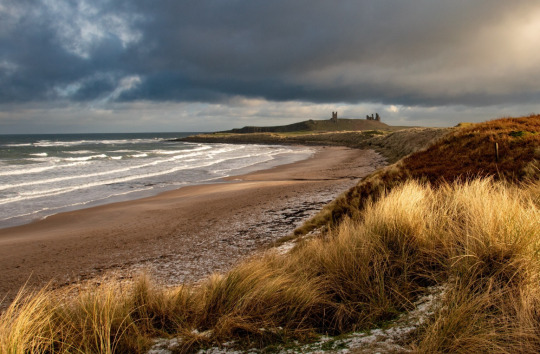#dunstanburgh castle
Text

Cormorant in the grass
#cormorant#bird#sea bird#nesting#tim dennis#canon#photography#lensblr#tim dennis.tumblr#70d#canon 70d#original photographers#pws#nature#wildlife#dunstanburgh castle#castle#Northumberland
107 notes
·
View notes
Photo
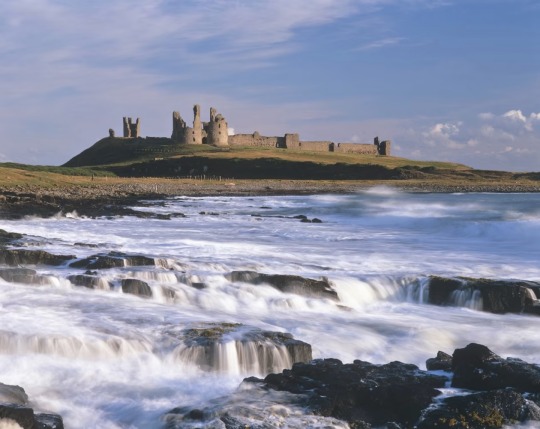
Dunstanburgh Castle | © National Trust | David Sellman | Financial Times
34 notes
·
View notes
Text
Adam W
3 notes
·
View notes
Text
Northumberland Coast November Road Trip
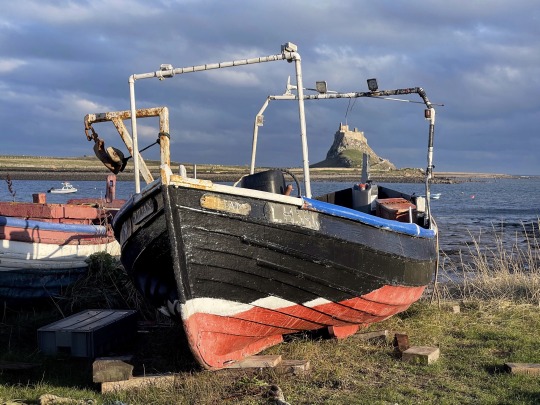
England in November is a season of shorter days and falling temperatures. We expected the weather for our Northumberland coastal road trip to be mixed, and that’s exactly what we got. At times, the conditions were challenging due to considerable periods of drenching rain and temperatures that barely reached double figures.
A road trip along Northumberland's beautiful coast, at any time of year, from Amble in the south to Berwick-upon-Tweed on the northern borders of Scotland, displays some of Britain's finest beaches and spectacular views. An Area of Outstanding Natural Beauty (AONB), this stretch of England’s most northern county is home to expansive stretches of stunning shoreline, wind-swept sand dunes, historic ruins, and charming fishing communities.
The November sun rises just before 8 am and sets about 4 pm, so I didn't have to worry about setting my alarm too early. Since there are less visitors in the area at this time of year, the coastal scenery can be explored without the crowds, having miles of beautiful Northumberland beaches virtually all to ourselves. We found some businesses and attractions understandingly closed or operating less frequently for the winter season. Finding tables at restaurants was easy whereas in the summer months booking ahead would be a necessity.
Our journey spanned five days, which gave us plenty of opportunities to leisurely explore the different places we visited, sometimes even retuning the next day, and time to shelter from the harshest weather conditions. The trip could easily be completed in half the time, especially within the longer days of summer.
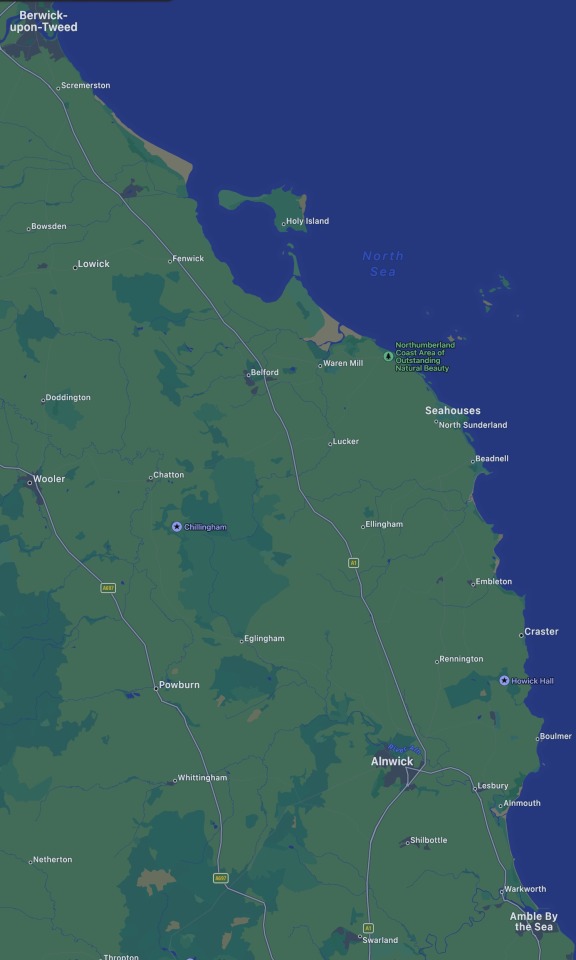
Northumberland map
Highlights of Our Northumberland Coast Road Trip
Amble
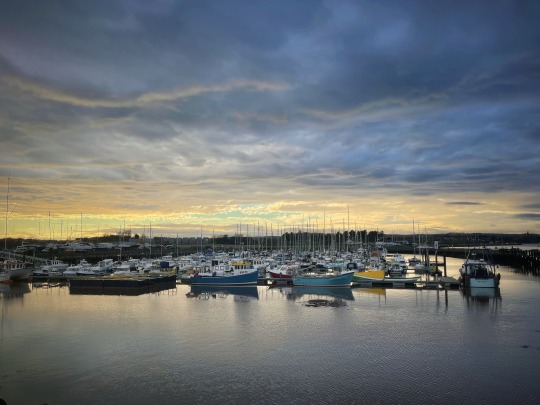
We begin our tour in Amble, known as "The Friendliest Port". A quaint harbour town at the mouth of the River Coquet that can be considered as the southern gateway to the Northumberland Coast. Harbourside seafood restaurants, brightly coloured beach huts, independent retail pods, and a sizable pier can be found in this increasingly popular town.

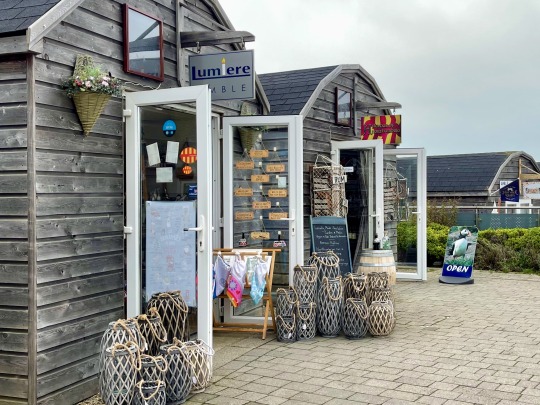
Amble still functions as a working port and has a small fishing fleet. A 250 berth Marina, situated on the banks of the River Coquet, offers a range of boat yard services. Boat trips operate in the spring-time to view wildlife, notably puffins and roseate terns, on Coquet Island. Sitting a mile off the coast and crammed with birdlife for half the year, the island is a Royal Society for the Protection of Birds (RSPB) managed nature reserve. Boat landings are not permitted and only RSPB wardens are allowed onto the island.


Amble gained the nickname 'the friendliest port' when on 3rd July 1935, the local Council sent the RMS Mauretania a telegram on it's last voyage to the the wreckers yard in Rosyth. 'Still the finest ship on the seas'. To which Mauretania replied with, "Thank you to the last and kindliest port."
Craster
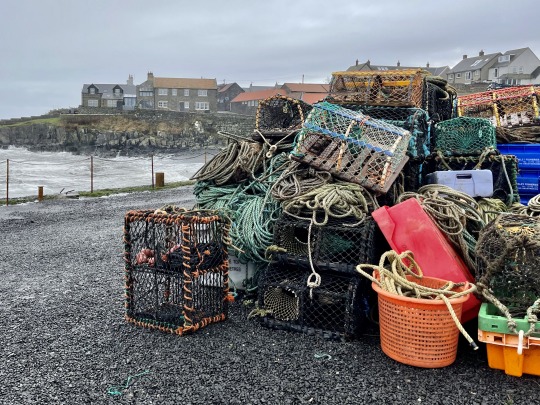
Moving approximately 15 miles north, we reach Craster, a remote coastal haven set amongst rugged rocks, dramatic coastline and beautiful countryside.


Craster has a small harbour shielded from the wind-whipped North Sea by the guarding embrace of two solid piers. These concrete harbour walls were being put to the test as we arrived. As enormous wave swells pummelled the sea defences with amazing force, we were reminded that no matter how picturesque this coastline may be, the sea can nevertheless be brutal and unforgiving,

As soon as we stepped foot in the village, we were aware of the enticing smell from the L. Robson & Sons fish smokeries. Craster has a reputation for some of the most delicious oak-smoked kippers in the country. Fish is still being cured in the ancient smokehouses, which date back more than 130 years, by this fourth-generation family business.

Craster more than makes up for its lack of beaches with a breathtaking, volcanically formed, rocky shoreline. A relatively easy, one mile walk along the headland provides breathtaking sea views as you approach the imposing ruin of Dunstanburgh Castle. One of the most atmospheric and inspiring castles in England, Dunstanburgh Castle was built in the 14th century.
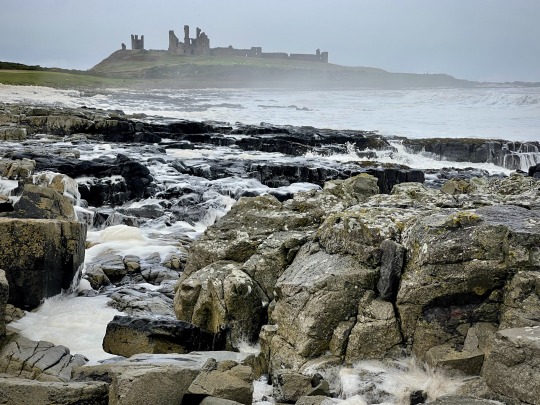
With over 700 sites—more than any other county in England, you will see plenty of castles on your journey up the Northumberland coastal route. This is due to the rather violent past with neighbouring Scotland to the north.
Seahouses

Further up the coast, the bustling market town of Seahouses offers everything you may want for a conventional coastal getaway. A variety of shops, restaurants, pubs, ice cream shops, and fish & chip eateries can be found in addition to fantastic sea views.
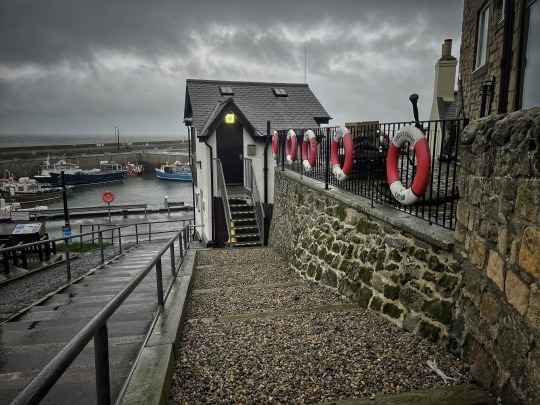
I have a fondness for Seahouses that stretches back over a decade or more. Known to many as ‘The entryway to the Farne Islands’ which are located two to three miles offshore. I’ve made the crossing over to the islands many times to photograph nesting sea birds. As well as being the most famous Sea Bird Sanctuary in the British Isles, the islands are also home to a large colony of Grey Seals. Birds that frequent these islands for nesting include Puffins and several breeds of Terns. Boats depart daily from the busy, colourful harbour.


There are beautiful beaches to the north and south of Seahouses, with the northernmost one being the most popular. Bamburgh Castle provides a magnificent backdrop to this expansive sandy beach which is bordered by grassy sand dunes.

Avian Flu
The worst bird flu outbreak to ever affect the UK has occurred during 2022, and experts have cautioned that the infection rate could increase even further throughout the winter of 2022-2023. The outbreak has had a huge negative impact on agriculture and the environment, killing 97 million birds worldwide (3.8 million in the UK). In response, the Farne Islands have been closed to visitors over the breeding season, as officials attempted to stem the spread of the infections. There is still a worrying battle ahead to rid our shores of this rampant killer disease.
Bamburgh
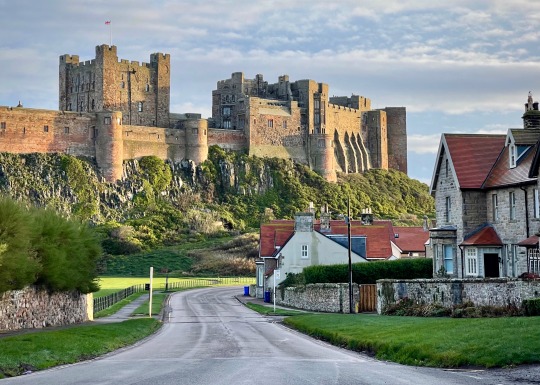
Bamburgh is the next-door neighbour to the community of Seahouses. A picture-postcard village, with English tea rooms, stone cottages, gift shops, eateries and B&Bs. The magnificent, 1,400-year-old Bamburgh Castle is seen before you even get to Bamburgh, majestically rising from the dunes system that fringes the beach, it literally is the stuff of legends.


The castle commands sweeping views of a 2.5-kilometer long, immaculate sandy beach with the Farne Islands, Holy Island, and Lindisfarne seen in the distance. Due to its lofty position, Bamburgh Castle is a beautiful subject for photos when shot from the beach.
Holy Island

Any visit to the Holy Island of Lindisfarne begins and ends with the vagaries of the tide. The island is cut off from the mainland twice a day during high tide when the causeway that connects the mainland to the island is submerged.
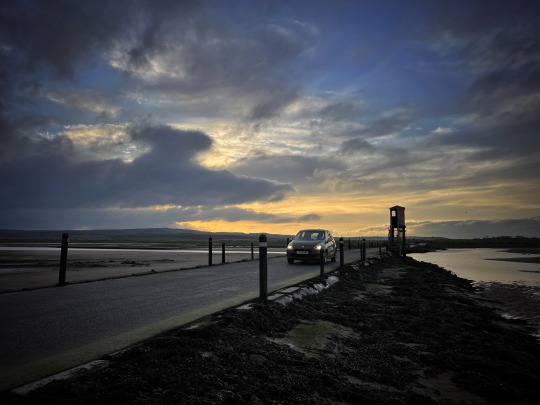
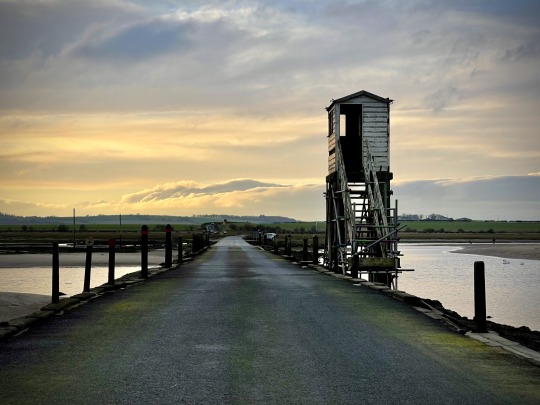
Crossing Holy Island’s causeway is a great experience, beautiful and sometimes eerie. The Road is approx 3 miles long and takes about 10 minutes to drive. Close to the start of the causeway is the famous refuge shelter for anyone unlucky enough that gets caught out by the tide. If you are unfamiliar with the causeway and the workings of the tides, it is best to educate yourself first, so long as you plan your visit for the right times, there is really nothing difficult to the crossing. I double-checked the crossing times before planning our trip.

Holy Island is steeped in history with spectacular coastal scenery. Whether you're interested in history, religion, walking, birdwatching, nature, or beaches, or like me in photography - Holy Island boasts a variety of attractions and activities. I think that it’s safe to say that most visitors are attracted by the extensive ruins of a 12th-century priory church and the associated monastic buildings. The equally famous Lindisfarne Castle is the other main visitor attraction.

Local boats moor iIn Holy Island Harbour, known as The Ouse. The legendary upside-down boats on a muddy area next to the beach are old herring boats that have been converted into fishermen's sheds.

Lindisfarne Castle dates back to the middle of the sixteenth century and was first used as a garrison. The castle, which is positioned atop the volcanic rock formation known as Beblowe Craig and is one of the Island's most recognisable and appealing sights, can be seen for miles in all directions. The castle we see today was constructed by renowned architect Edwin Lutyens beginning in 1903 and is an amazing blend of a Tudor artillery fort and an Edwardian country home.

Reconnecting with some of our favourite places along the Northumberland Coast has been a wonderful experience. Who wouldn't be captivated by this special place? It's every bit the wild coast you'd want for photography inspiration.
All images © Adrian McGarry
www.adrianmcgarry.com
#Road trip#northumberland#northumberland coast#coast#coastal photography#coastline#amble#craster#Seahouses#bamburgh#dunstanburgh#lindisfarne#holy island#sea#ocean#lighthouse#castle
9 notes
·
View notes
Text
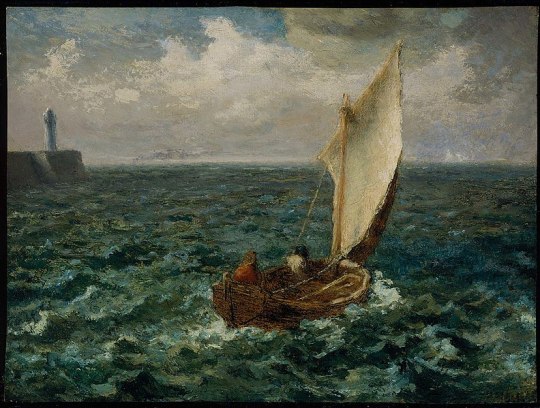
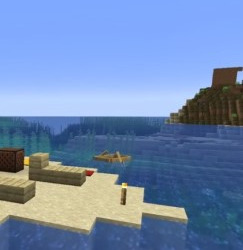




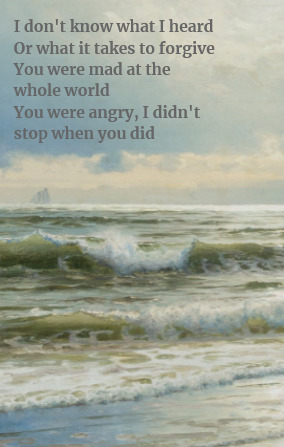




Two brothers on the same beach and an ocean away.
Lyrics are from Older by Searows. Rest of credit is below the cut.
Jean-François Millet, Fishing Boat / Jean Désiré Gustave Courbet, Beach at Dieppe, The Fishing Boat / Margaret W. Tarrant / Charles Euphrasie Kuwasseg, The Beach / Frederic Edwin Church, Stormy Sea / William Trost Richards, Luminist Coastal Scene / Winslow Homer, Dad's Coming! / Alexander Nasmyth, A View of Tantallon Castle with the Bass Rock / John Wilson Carmichael, A Cutter in Distress to the South of Dunstanburgh Castle, Northumberland
29 notes
·
View notes
Text
Getting back to Marmion! Some bits of context for the last few days’ posts.
A palmer was sort of a continual pilgrim, who spent a period of time travelling to holy sights and praying. The greatest holy sight of all was Jerusalem, where the palmer in the poem has in fact been, along with a huge list of other holy sights, from Mt. Ararat where Noah’s Arc reputedly came to rest after the Flood, to Mt. Sinai, to Santiago de Compostela in Spain, and in England Durham and Canterbury among others.
I think (I am not sure) palmer paid for their travels in part by donations from pious people, who might want the palmer to pray for them at some shrine. Marmion himself expresses a more lighthearted picture of palmers in general -
I love such holy ramblers; still
They know to charm a weary hill,
With song, romance, or lay:
Some jovial tale, or glee, or jest,
Some lying legend, at the least,
They bring to cheer the way.”
- and that may not be unrealistic for a category of people that could have included the medieval equivalent of a tourist with a GoFundMe. But this palmer is not of that kind - he’s haggard and gloomy, and kind of disturbing with his nighttime mutterings. But Marmion chooses to accept him as a guide all the same, and the next morning the whole group departs.
The first canto (The Castle) ended, we switch scenes and characters for the second (The Convent), to a boat travelling north, up the eastern coast of England, from Whitby to the island of Lindisfarne (also called St. Cuthbert’s Isle) with a group of nuns aboard. Now, where has Lindisfarne been mentioned in the previous canto? In the bit about Marmion’s former page:
That boy thou thought’st so goodly fair,
He might not brook the Northern air.
More of his fate if thou wouldst learn,
I left him sick in Lindisfarne:
The voyage is both a little scary and exciting for the nuns, who don’t get out much. Many of the castles the pass, like Warkworth and Dunstanburgh and Bamburgh, are ones you can still see on the Northumberland coast today.
But two of the group in particular are not having fun: the abbess (chief nun), who is not named, and the novice (i.e., has not yet taken vows and become a nun) Clare. Clare joined the convent recently after the loss of the man she loved, and in order to escape an unwelcome suitor who is trying to marry her in order to get at her property.
She was betrothed to one now dead,
Or worse, who had dishonoured fled.
Her kinsmen bade her give her hand
To one who loved her for her land;
Herself, almost heart-broken now,
Was bent to take the vestal vow,
And shroud, within Saint Hilda’s gloom,
Her blasted hopes and withered bloom.
On top of these griefs, there’s been an attempt to murder her, and the people who attempted it are now prisoners in Lindisfarne awaiting trial:
And jealousy, by dark intrigue,
With sordid avarice in league,
Had practised with their bowl and knife
Against the mourner’s harmless life.
This crime was charged ’gainst those who lay
Prisoned in Cuthbert’s islet grey.
Moving back a bit to yesterday’s entry, this is why the abbess of Whitby is going on this journey: to sit in judgement on these attempted murderers.
Sad was this voyage to the dame;
Summoned to Lindisfarne, she came,
There, with Saint Cuthbert’s Abbot old,
And Tynemouth’s Prioress, to hold
A chapter of Saint Benedict,
For inquisition stern and strict,
On two apostates from the faith,
And, if need were, to doom to death.
Lindisfarne is a tidal island: at low tide it is a peninsula that can be reached from the mainland across mudflats, but at high tide it is an island.
The tide did now its floodmark gain,
And girdled in the saint’s domain:
For, with the flow and ebb, its style
Varies from continent to isle;
As the ship reaches Lindisfarne, the nuns of Whitby on the ship sing a hymn, and the nons and monks of Lindisfarne sing one in return.
13 notes
·
View notes
Photo

Dunstanburgh Castle, England By NeoMam Studios
“Crumbling Castle Digitally Restored To Their Ancient Glory” Blaze2 notes
30 notes
·
View notes
Text
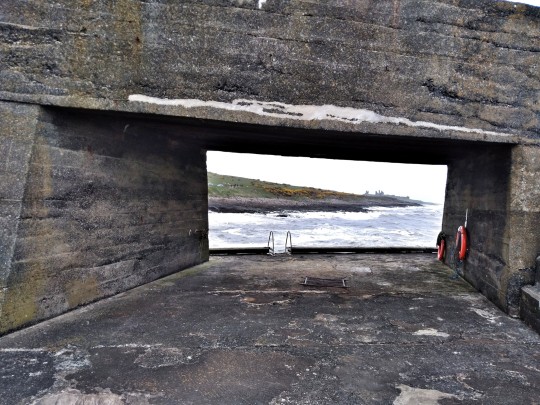
Through the gap looking towards Dunstanburgh Castle. Craster harbour, Northumberland, UK.
2 notes
·
View notes
Text
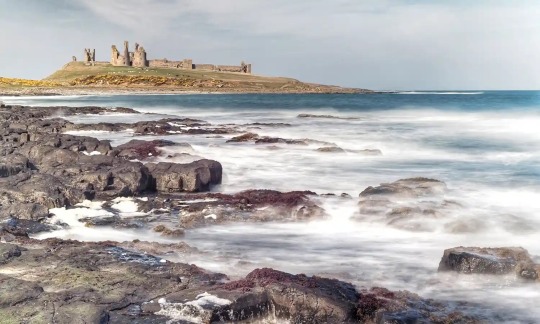
Shoreline. ‘Photo taken of Dunstanburgh Castle, Northumberland. Taken on the path from Craster.’ Photograph: Keith Fenwick | Guardian Readers Pictures #craster #northumberland #dunstaburghcastle
5 notes
·
View notes
Text
Dunstanburgh castle
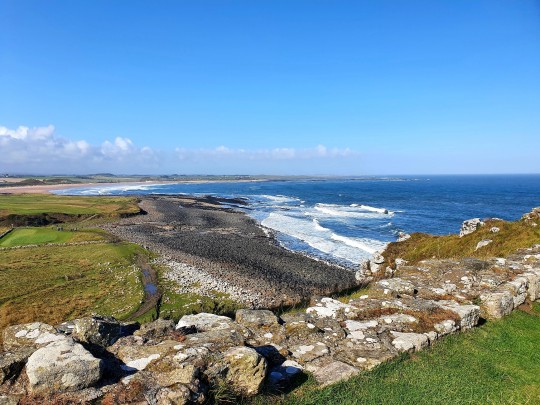

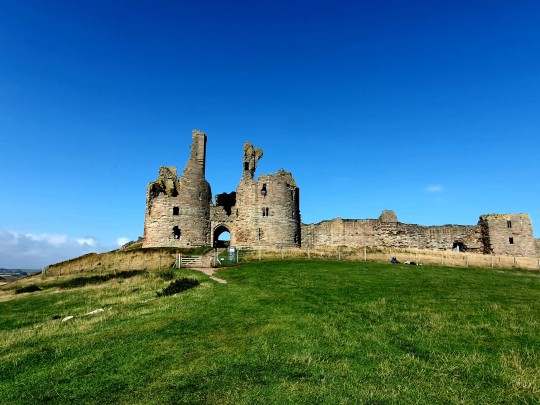
16 notes
·
View notes
Text
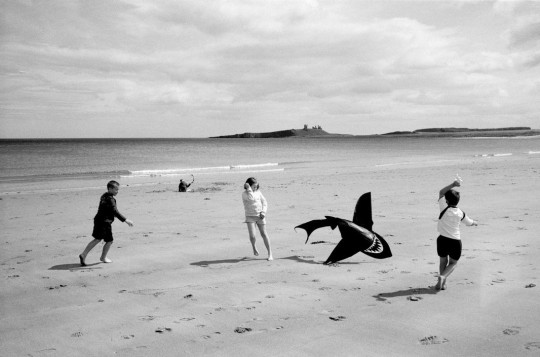
Stuart Franklin
Embleton Bay, looking over Dunstanburgh Castle. Farne Islands, Northumberland, UK. 2004
6 notes
·
View notes
Text
Visiting Hogwarts and Ancient Abodes: A Castle-to-Castle Trek for Movie and History Buffs
New Post has been published on https://eazycamping.net/visiting-hogwarts-and-ancient-abodes-a-castle-to-castle-trek-for-movie-and-history-buffs/
Visiting Hogwarts and Ancient Abodes: A Castle-to-Castle Trek for Movie and History Buffs
In far northeast England, the county of Northumberland has a higher concentration of castles than any other part of the country. If you’ve seen some of the most popular movies and TV shows of the last two decades—think Harry Potter, Indiana Jones, Downton Abbey, Transformers, and the Netflix series The Last Kingdom—you’ll almost certainly recognize at least a few of them.
I recently hiked from castle to castle on a self-guided trek with Inntravel. I did all the walking, and they handled everything else, including a luggage transfer between hotels so I would only need a daypack to hike. I walked about 30 miles over five days, taking ample time to explore the castles. Along the way, I also made time for a boat tour of the nearby Farne Islands, where I was lucky enough to see seals, dolphins, puffins, and a variety of other marine birds.
If you’re a movie buff, a history buff, or both, this is the trip for you. Here are five of the spectacular castles you can expect to see.
1. Warkworth Castle
Image by David Tomlinson
I started my trip at Warkworth Castle in the town of the same name. Inntravel arranged a cab from the Alnmouth train station, which has connections to London, and set me up at the Warkworth House Hotel, just minutes away from the ruins of a castle that dates back to the 1150s. Today, the site is managed by English Heritage, which occasionally runs events like the Knights’ Tournament to show you what life was like in the Middle Ages.
2. Alnwick Castle (aka Hogwarts)
Image by Inntravel
After two nights in Warkworth, I hiked north through the seaside town of Alnmouth, then inland to Alnwick. It’s basically a pilgrimage site for Harry Potter fans—it plays the role of Hogwarts in the first two films and this is where Harry first learned how to ride a broom. In honor of that bit of film history, Alnwick Castle runs free broomstick training classes daily for all ages (unless there’s bad weather).
Alnwick—pronounced Ann-ick—has also been featured in Transformers: The Last Knight, Downton Abbey, and many other films. Also worth exploring is the nearby Alnwick Garden (you’ll need a separate ticket), which feels like something straight out of Alice in Wonderland with its leafy labyrinth and hedge-tunnel walkways.
The Percy family, which includes the Duke of Northumberland, has lived in Alnwick Castle since it was built over 700 years ago. The family’s living quarters, the State Rooms, are occasionally open for visitors and are an elaborate sight worth seeing.
I stayed at the Cookie Jar, a posh hotel just steps from Alnwick Castle (yes, your room will have a cookie jar in it). It’s stylish, has an incredible breakfast, and is super-convenient to walk around town.
3. Dunstanburgh Castle
Image by Inntravel
From Alnwick, I took a bus to the seaside town of Craster. Just beyond the town, the ruins of Dunstanburgh stand tall and serve as quite the backdrop for a nearby golf course. Construction on the castle was begun in the early 1300s. Today, the land is owned by the National Trust, and the property is managed by English Heritage. If you’re traveling with a family and planning to visit more than a few such sites, you could save money with an annual membership, even if you don’t live full-time in the U.K.
From Dunstanburgh, I hiked onward across beaches with nesting Arctic terns to the town of Beadnell. I stayed two nights there at the beautiful Beadnell Towers hotel, which has an excellent dinner service.
4. Bamburgh Castle
Image by Inntravel
Perhaps the grandest of them all, the privately owned Bamburgh Castle has changed hands extensively over its 1,400-year history. (You read that correctly. Construction on the castle started in the 500s.) More recently, you may have seen the castle in the opening scenes of Indiana Jones and the Dial of Destiny, which was just released in June.
It was also featured in Transformers: The Last Knight and is the real-life inspiration for the Netflix series The Last Kingdom. Bamburgh Castle and Alnwick Castle are separately and independently opened but both are part of the Historic Houses network. So, if you plan to visit other castles, homes, or gardens in their collection, membership could save you a bit of cash.
5. Lindisfarne Castle
Image by Inntravel
The Holy Island of Lindisfarne, famous for the handwritten Lindisfarne Gospels, is only an island during low tide. When the tide is out, you can walk or drive across the causeway. But a far better way to see it is to take a boat tour.
I walked from Beadnell to the picturesque Seahouses, where I caught a ride with Billy Shiel’s Boat Trips. We saw dolphins and seals on the way there and countless puffins on the way back. On land, you can explore Lindisfarne Castle, which was renovated into a holiday home for the founder of Country Life Magazine. Today, it’s managed by the National Trust and well worth a visit, even if you go only for the stunning Gertrude Jekyll Garden, which is free to visit.
The island is also the site of the ruins of Lindisfarne Priory, which dates back to the 600s and is where the Lindisfarne Gospels were written. Today, it’s managed by English Heritage, and the gospels can be seen at the British Library in London. I highly recommend adding a day to your trip so you can explore everything here without being on a time crunch.
Pro Tip for Ultimate Flexibility
If you’re planning to do this trip as part of a bigger tour around the United Kingdom and Europe, you may be able to save on train tickets with a Eurail pass or Interrail if you’re a resident of the U.K. or Europe. While some routes require seat reservations, most don’t, so you can leave your departure date and time open-ended if you fall in love with a place you’re visiting and want to add an extra day or two to your trip without losing your train fare.
Editor’s Note: Inntravel hosted our writer on this trip and Eurail/Interrail comped a train pass to cover her travel expenses.
Source
0 notes
Text
Lovely Walk From Craster to Dunstanburgh Castle in Northumberland.
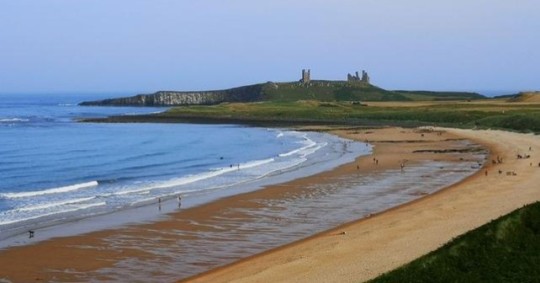
0 notes
Photo

Respite at #DunstanburghCastle 🏰 from touring #LittleManfred 🐕 up north @SoldiersArtsAcademy @AlnwickPlayhouse @QueensHallArts #SoldiersArtsAcademy #AlnwickPlayhouse #QueensHallHexham #MichaelMorpurgo #WarHorse #WarHorse40 #PuppetTheatre #PuppetShow #DevisedTheatre #PhysicalTheatre #TheatreForYoungAudiences #TYA #ChildrensTheatre #ChildrenTheatre #KidsTheatre #KidsShow #FamilyTheatre #AdamWittek #PhysicalActor #PhysicalPerformer #Puppeteer #Puppetry (at Dunstanburgh Castle) https://www.instagram.com/p/Coc23RvoWTz/?igshid=NGJjMDIxMWI=
#dunstanburghcastle#littlemanfred#soldiersartsacademy#alnwickplayhouse#queenshallhexham#michaelmorpurgo#warhorse#warhorse40#puppettheatre#puppetshow#devisedtheatre#physicaltheatre#theatreforyoungaudiences#tya#childrenstheatre#childrentheatre#kidstheatre#kidsshow#familytheatre#adamwittek#physicalactor#physicalperformer#puppeteer#puppetry
0 notes
Text
A cradle of Anglo-Saxon power
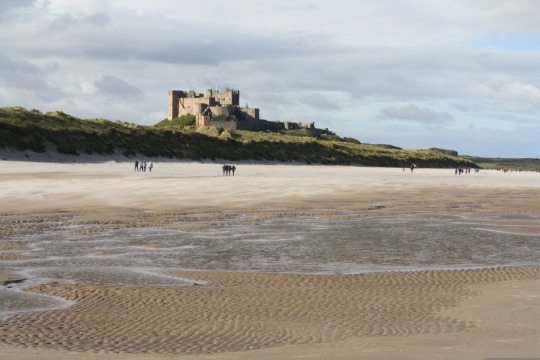
The Britons settled in what is now north-east England - a territory known as Bryneich - built a wooden fortification on a basaltic promontory beside the coast, called Din Guarie, in a location that would soon become strategic when the Anglo-Saxon invasion that began in the 5th century AD shaped first the kingdom of Bernicia and then Northumbria, when the former incorporated the neighbouring kingdom of Deira.
By the 6th century, when Ida became the first known king of Bernicia, he took advantage of the Briton fortress to build a castle that would also become its capital. Thus Bamburgh Castle entered history, with the name inherited from the Britons of Din Guaydri.
Bamburgh was centrally located in the kingdom of Ida, being 15 kilometres north of Lindisfarne Castle, an enclave now better known for its abbey, and 10 kilometres south of Dunstanburgh Castle.
Angles, Saxons and Jutes, the three peoples who crossed the sea from northern Europe, established several Anglo-Saxon kingdoms in Britain from the 5th century onwards, first in smaller territories in an evolution that eventually settled into a number of seven.
This number defined the period known as the Heptarchy, a period that lasted until the 9th century, when after the Viking invasions - in which they dominated much of the British Isles under the name of Danelaw - the kingdom of Wessex gradually recaptured territory to become the original kingdom of a unified England under Saxon sovereignty. In 993, the Vikings destroyed the Anglo-Saxon castle of Bamburgh.
In the following century, the dynastic struggle between the two peoples vying for the English crown made it clear that the bellicosity of the invaders from the continent was again outweighing that of the natives. The Northmen - actually French since they settled as sedentary men on the coast of a territory they renamed Normandy, as vassals of the king of France - subdued the islanders - already a fusion of Celtic Britons and Germanic Anglo-Saxons.
The Normans built a new castle at Bamburgh, this time a real fortress from which to control the border with Scotland, but which served to feed the lust for power of the new overlords, who soon revolted against the new kings within 30 years.
Bamburgh Castle was ceded by the Crown to the Forster family, who held the castle until the 15th century, and became owners until the 18th century, when financial problems caused it to pass into ecclesiastical hands and it was even converted into a hospital.
In the late 19th century, the castle's deterioration was halted when the industrialist William Armstrong bought it and had it restored, so that its imposing silhouette still dominates the North Sea coast.
1 note
·
View note

